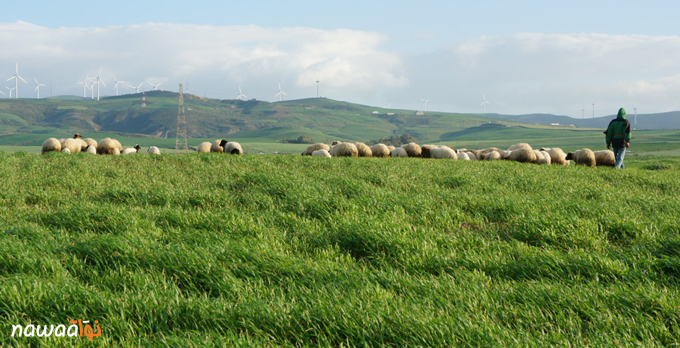
By Dr. Aram Belhadj, Assistant professor, Tunisia and Dr. Achraf Ayadi, Financial Analyst, Paris
Introduction
Tunisia has seen an economic growth close to 5% in average during the 2000s before the start of the uprising against the regime in December 2010 and the step-down of the president in January 2011. Tunisian Revolution has been followed by a collapse in production and productivity which both lead to economic growth shrink in almost all the sectors.
Despite notable progress in democratic process, economic problems and social turmoil have continued. Furthermore, the biggest challenges facing Tunisian government are unemployment, poverty and social disparities, especially among young graduates. Yet, unemployment rate continues to be high staying at 15.6% overall (and 31.6% for the graduates). Similarly, poverty rate exceeds 15.2% while extreme poverty rate is almost 3%. Inequality is challenging as well since the GINI index (incomes distribution) is staying at 30.9%.
Since 2011, all the succeeding governments have been trying to break the trend. The main idea of economic counselors was to wide state expenses in the period of Constitutional reforms in order to support the economy, then, consider stopping them. This is the so-called “Go-and-Stop” strategy. However, writing a new Constitution took three years and not the one as initially planned. The expansion of public expenses for so long time led to an unprecedented increase of public employment and a complete failure to restore private sector faith in the real economy. Successive Governments were more sensitive to savage strikes –sometimes illegal- and political game than to the deep commercial deficit and the dangerously growing public debt.
But the key problem here is that decision-makers have never set-up a clear strategy for growth. In fact, stimulating economic growth requires targeting sectors with high potential, providing competitive advantages and high employment potential, such as Agriculture.
In Tunisia, we have two kinds of Agriculture: an extensive Agriculture which is executed by families which are small holders operating over very small lands and using few mechanical tools and an intensive one which is led by capitalists with much tied link to local agribusiness industry.
Even if it represents a small fraction of national production, the extensive Agriculture is important for many reasons. Indeed, paying attention to this kind of Agriculture allows government to reduce poverty and inequality, guarantees equilibrium between rural and urban population as well as improve town planning and economic growth.
This note is an attempt to describe the potential of the primary sector, notably the extensive Agriculture before identifying some measures to be followed in order to disentangle obstacles facing the sector and the growth in Tunisia.
Agriculture: the underestimated sector
Global economic, cultural, social and environmental transformations have placed the agricultural sector at the core of policymakers’ interests. Indeed, governments around the world, especially in developed countries, have understood that paying attention to Agriculture allows them to gain many challenges such as insuring food security, protecting environment as well as offering economic opportunities. These challenges have brought at the forefront many important issues, notably leadership, strategies, popularization and mentoring as well as growth model inside the primary sector.
In Tunisia, the Agriculture sector is strategic since it represents 12% of GDP, 10% of total investments, 11% of total exports and employs 16% of active population. This sector has played an important role in the last decades, even during political transition. Indeed, since 2011, despite weak growth, the contribution of the sector to national income has always been important, except during some short rainfall seasons.
Basically, it is more convenient to talk about « two-speed » Agriculture since, as explained, we have extensive and intensive Agriculture. However, until today, extensive Agriculture has continued to receive less interest despite its strategic importance in reducing poverty and inequality and insuring inclusive growth.
In Tunisia, 75% of Agriculture farms are split over very small lands (less than 10 hectares) and a lot of farmers have, on average, more than 60 years. These farmers suffer from the weakness of infrastructure, a very low instruction level, a tricky access to markets and transformation units as well as an absence of financial subsidies. Combined with irregular rainfall and lack of access to equipment, seeds and fertilizers, productivity of this type of Agriculture has been continuously very low.
It is important to note that the role of women is increasing, especially in rural areas. In fact, women operating inside the sector represent almost 40% of female active population and their engagement in agricultural activities varies between 64.5% and 78% despite the hard social, economic and financial conditions they have been facing.
Unfortunately, even after the uprising in 2011, governments have not placed Agriculture at the top economic priorities, especially the extensive one. Indeed, until today, rural areas continue to be isolated, with weak infrastructure and tiny local social network. Moreover, instruction level of rural population continues to be very low, especially because of the lack of specific training programs. In addition to that, official initiatives are scarce and engagement becomes low because of the absence of financial stimulus mechanisms, insurance systems and social security programs. That is why labor force in the primary sector turn out to be less instructed, not qualified, low productive and more expansive and the sector in itself seems to attract less capital intensive activities.
Nowadays, Tunisians seem more sensitive to Agriculture issues because of many factors. The first one is the increasingly higher prices of fruit and vegetables. Inflation in these products noticed a double- digit increase with a clear impact on middle class eating habits. The second one is the persistence of powerful intermediaries between farmers and retailers. These wholesalers have large storage capabilities and then an ability to put the pressure either on farmers or on retailers as well. Revenues of farmers are reduced and retailers are obliged to increase retail prices in order to secure margins.
This situation means that it is more urgent than ever for government to empower farmers, especially hard-working women, in order to improve their economic and social situation. This is an essential first step to put the Tunisian Agriculture on the right way for modernity and growth.
Agriculture: how to unblock growth?
In Tunisia, stakeholders continue to believe that Agriculture could contribute up to 35% of GDP instead of the actual 12% and might offers more than 400.000 jobs instead of approximately 100.000 nowadays (excluding fishing). Decision makers wish to realize a cover ratio (fraction of exports comparing to imports) close to 90% as part of a fifth-year ahead Governmental plan.
National Dialogue engaged in December 2015 under the leadership of the Ministry of Agriculture showed that the sector could be the backbone of modern, fair and resilient economy. Attention should be focused on five key issues: governance, markets, innovation, financing and training. This latter field was considered as central since it helps improving productivity, handling value-chain and insuring inclusive growth.
Decentralization could help shaping regional policies, especially those related to vocational training. Delegating to regional entities (such as CRDA) the responsibility of targeting innovative programs is more adapted to regional and local context. Indeed, it could identify and creates synergies between local third parties in the region. Practical and innovative training programs could accelerate the implementation of best practices in irrigation, a more effective use of fertilizers and pesticides as well as crop productivity.
Besides, since Tunisia has a huge potential in animal care and proper grazing (with 450.000 bovine female units and 3.7 millions ovine female units), multiple specific mechanisms have to be implemented like attracting cattle herders and offering them coaching techniques.
On the other hand, helping small farmers to create cooperative could improve efficiency through merging efforts, facilitating collective actions and offering services in many activities such as harvesting and pruning.
Paying attention to active women in the primary sector is also essential. This could be done first and foremost by setting up dedicated databases since there is too little information available related to these women: age, nature of activity, level of instruction, daily wages, etc. It could also be done through improving their working conditions and bringing healthcare and social proximity services.
However, efforts aiming to boost growth in rural areas should be completed through overcoming barriers that continue to isolate these areas from the urban littoral cities. Improving accessibility in terms of infrastructure (especially in sport and culture), transport and communication is very useful. That is to say, it is important to organize spaces in order to encourage agribusiness industries to invest in rural areas.
These possible tracks to improve Agricultural situation in Tunisia, especially extensive Agriculture, might have a huge impact on young unemployment. In fact, reorganizing small farmers in cooperatives and a closer Agribusiness industry would shorten distribution channels and give more independence from wholesalers. Also, insuring simple medical care and retirement plans will create new opportunities for young unemployed people. For them, it is highly recommended to rethink professional training content and create alternative ways to learn how to manage better their farms, how to make more effective their cooperative and how to improve productivity. The challenge today is to demonstrate that Agriculture is an attractive sector that could secure stable revenues and save them from poverty and depression. Creation of hundreds of thousands of jobs in Agriculture is not an utopia but a paradigm shift should be put in place. That could not be achieved without some “proof-of-concept” cases, to show what could be achieved at a little scale then generalized. The Government and the Parliament should act in order to align legal framework with these new ambitions for the Agriculture industry.
Conclusion
Tunisian economy is facing a chaotic situation. The economic policy in Tunisia is facing many dilemmas: how to increase growth when more than 60% of public spending is dedicated to administrative expenditure of the State and less than 20% is dedicated to public investments? How to improve tax revenues when hidden economy represents around 50% of the overall economic activity and tax pressure on the remaining legal activities is up to 21%? How to straighten mining production in a critical social situation? How to advocate for tourism when the risks of terrorists’ attacks remain high? etc.
Decision-makers need some quick wins. Opportunities to develop a more equilibrated development model are possible by pushing Agriculture sector at the top of Nation’s agenda. It will require a clear plan and a huge investment in people –especially rural women- and in infrastructure. But this investment would be as valuable as many mediated big projects: it will give more stability to existing workforce, create jobs with stable perspectives for young people and implement a more integrative and win-win collaboration with agribusiness industry.




3 years to write a Constitution just to make happy the zionist controlled France … knowing that Islam, since inception, is not compatible with western values.
BTW, the UK has no written constitution at all ….
A very interesting read, I hope our goverment invests properly into this sector as the opportunities are huge and our food security is not insured